Driving games typically have some kind of identity that exists beyond the cars and the races. The open-world Forza Horizon 5 is fun and celebratory. Gran Turismo 7 is prestigious and classy. But Forza Motorsport, the 2023 reboot of the simulation series from Turn 10 and Xbox Game Studios, is seemingly aiming to be as neutral as possible.
“I think it’s important that we stand away,” says Dan Greenawalt – the co-founder, longtime director, and current General Manager of the Forza Motorsport series. “We don’t have an opinion, we create a world where you develop your own.”
And Forza Motorsport certainly feels that way. After spending a handful of hours with a preview version of the game, which featured an introductory onboarding and the start of the Builder’s Cup career series, I was surprised by how no-frills and to-the-point it was. It felt more like a training program than a piece of pure entertainment, where self-improvement is the main motivation.
But the game seems to handle it all quite well, thanks to some small but meaningful ideas that help keep you more keenly invested in every moment of the race, and reward you for paying more attention to the details of the simulation. And what’s more, the first few hours also show that the game can deftly cater to both learner drivers and seasoned professionals in the same breath.
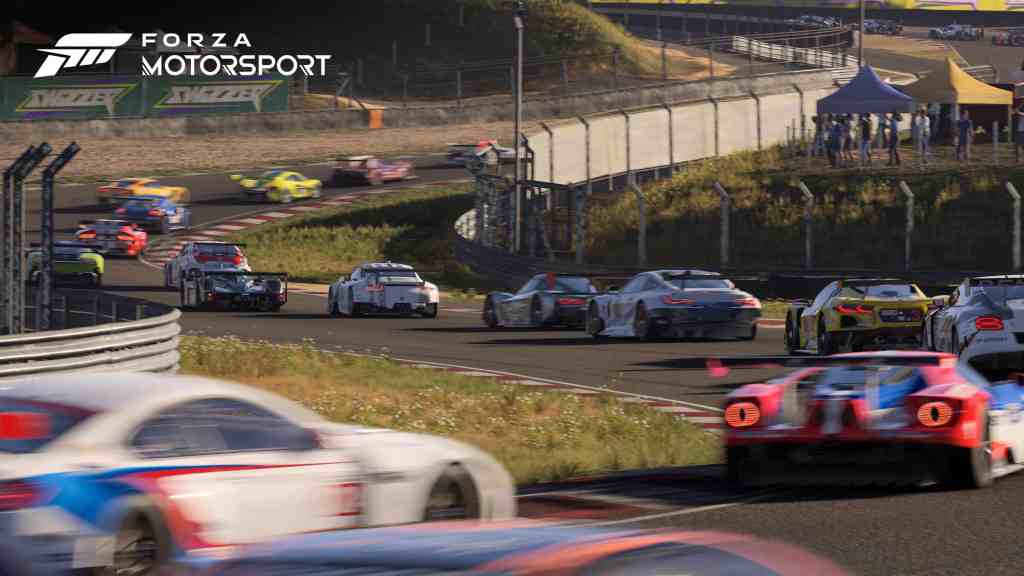
On the Track
You’re immediately flung onto the track in Forza Motorsport, but not without some clear and efficient guidance – I can’t remember the last time I actually noticed the tutorial prompts in a racing game walking me through the controls of acceleration and braking. Assist options are all on by default, making the driving simulation as approachable as possible, but with a clear checkpoint that explains everything that’s being done, allowing more experienced racers to make adjustments before potentially getting too frustrated.
Each individual race in the cup is preceded by mandatory practice laps, forcing you to warm up and get at least somewhat familiar with the layout of the track and the feel of your car before competing for actual stakes. A new vehicle-specific experience system rewards you for adept driving in relation to the maximum theoretical performance of the car you’re driving, so if you’re confident in pulling off perfect turns around tricky corners and running clean races, your car’s level can skyrocket multiple levels during a single race, which provides new options for upgrading performance in the garage.
With Forza Motorsport acting as a soft reboot, both in name and concept, Greenawalt says that the goal for the team has been to create a long-lasting platform – “it’s going to be ever-changing,” he said. The story that Turn 10 and Xbox are telling pre-release revolves around their efforts to make it the “most accessible and approachable racing simulation on the market” from the get-go, according to Creative Director Chris Esaki. And that’s no small feat given the meticulous depth of simulation that Forza has traditionally prided itself on.
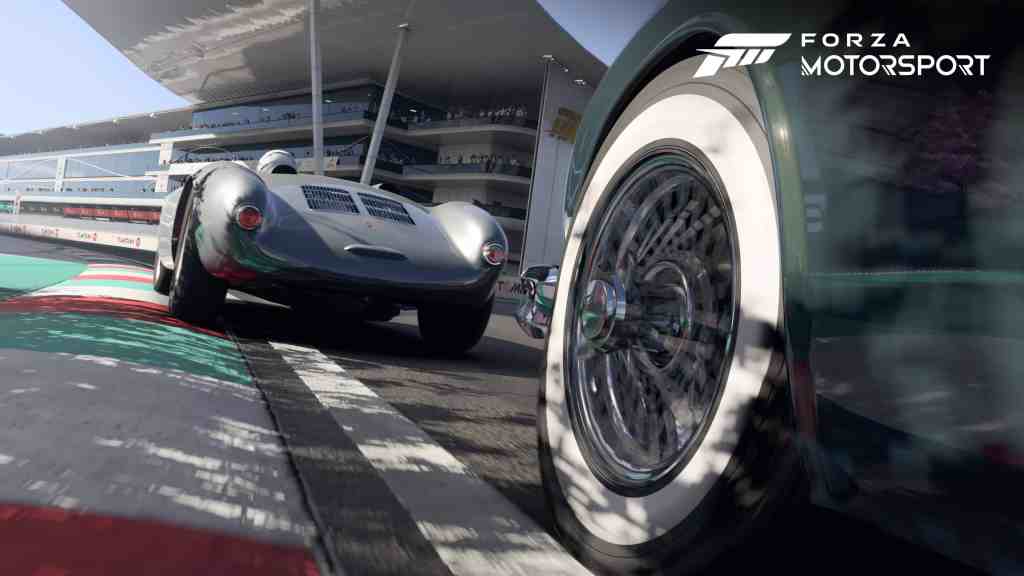
How Forza Motorsport Fits Into Xbox’s Accessibility Mission
“This is the first time we’ve really, really taken a good look at how we introduce a ton of the complexity of the game over time,” said Esaki. “We’ve added a bunch of new systems, a whole new physics system of course… and we want to unfold those systems and those experiences in an elegant way so you can start understanding them through natural play and natural learning.”
“And we have a bunch of assists on top of that, which allows the game to meet you where you are, whatever your physical abilities are, even to the point where if you’re unsighted, you can actually get into the game and be successful, and maybe even drive a car for the first time.”
Esaki and Greenawalt regularly speak about the philosophy of natural learning, which they’ve tried to better integrate into Forza Motorsport‘s onboarding this time around. They tell me one of the studio’s motto is “You gotta go slow to go fast”.
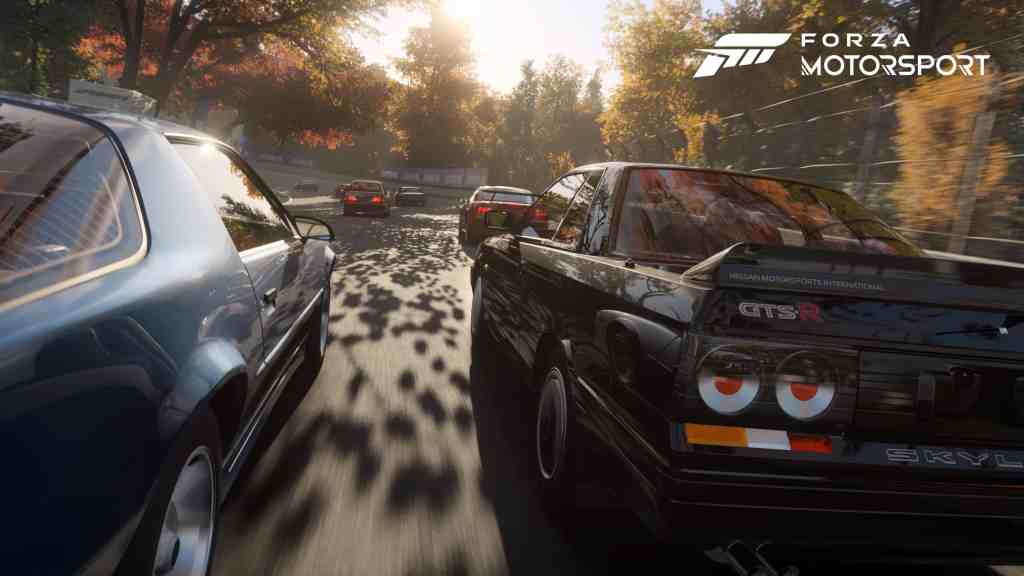
This refers to the suite of decisions that make up the introduction of the game, which provides several handholds, a selection of reasonably powered but manageable cars, as well as individual car-based XP systems and mainstays like the driving line (which details an efficient path and suggestions on when to break), and the rewind mechanic. Turn 10 hopes that all of these features will allow even brand-new racing players find enjoyment in the game’s training-like environment.
“Do use all the mechanics and the visualisations and the aids that we have to help you get used to all of the complexity of driving a car in our game,” Esaki suggests, “And it will be entirely rewarding as you go through and realise, ‘Oh, I’ve mastered braking. And I’ve begun to master controlling the throttle and all those different inputs.’ And then all of a sudden, it’s becoming this symphony of complex inputs as you’re going through each corner.”
“When you start nailing that, it just everything starts to feel even better and better. Your score is going up, you’re gaining more XP, and you’re getting faster. To me, [it’s] the biggest gift that this game is embracing natural learning, and just learning how to play the game just through play. And you will find that the game will reward you for just doing that.”
Adopting RPG design for a racing simulator
Quizzed about genre innovations that may have informed some of the new approaches in the Forza Motorsport reboot, Greenawalt turned the attention away from racing games, suggesting that the team took a much broader-minded design approach. “I actually find that we find our best inspiration generally in other genres,” he said, “and even outside of games entirely.”
“I used to teach martial arts, so learning is something that it’s important to me, but also teaching. And having this ability to experiment through natural play, make mistakes and get feedback really quickly – this is something that we’re used to in a lot of types of games, but not so much in driving games.”
The key example here is the car-specific experience system once more, which measures how well you’re performing manoeuvres in relation to what’s possible with the vehicle you’re driving. “Using our physics and our AI to give you a score in real-time on the track – that is like an XP system in another game,” Greenawalt said. “It’s actually like seeing the numbers come up over the top of a hit, especially in a dexterity-based action RPG game, where you’re actually able to counter somebody and hit them with a hard hit, and get a crit.”
The idea of risk-reward decisions in other games also came into play in introducing the new ‘Challenge The Grid’ system, which allows you to select your position in a race’s starting grid, on top of CPU and damage settings, to potentially earn more credits if you manage a top-three finish.
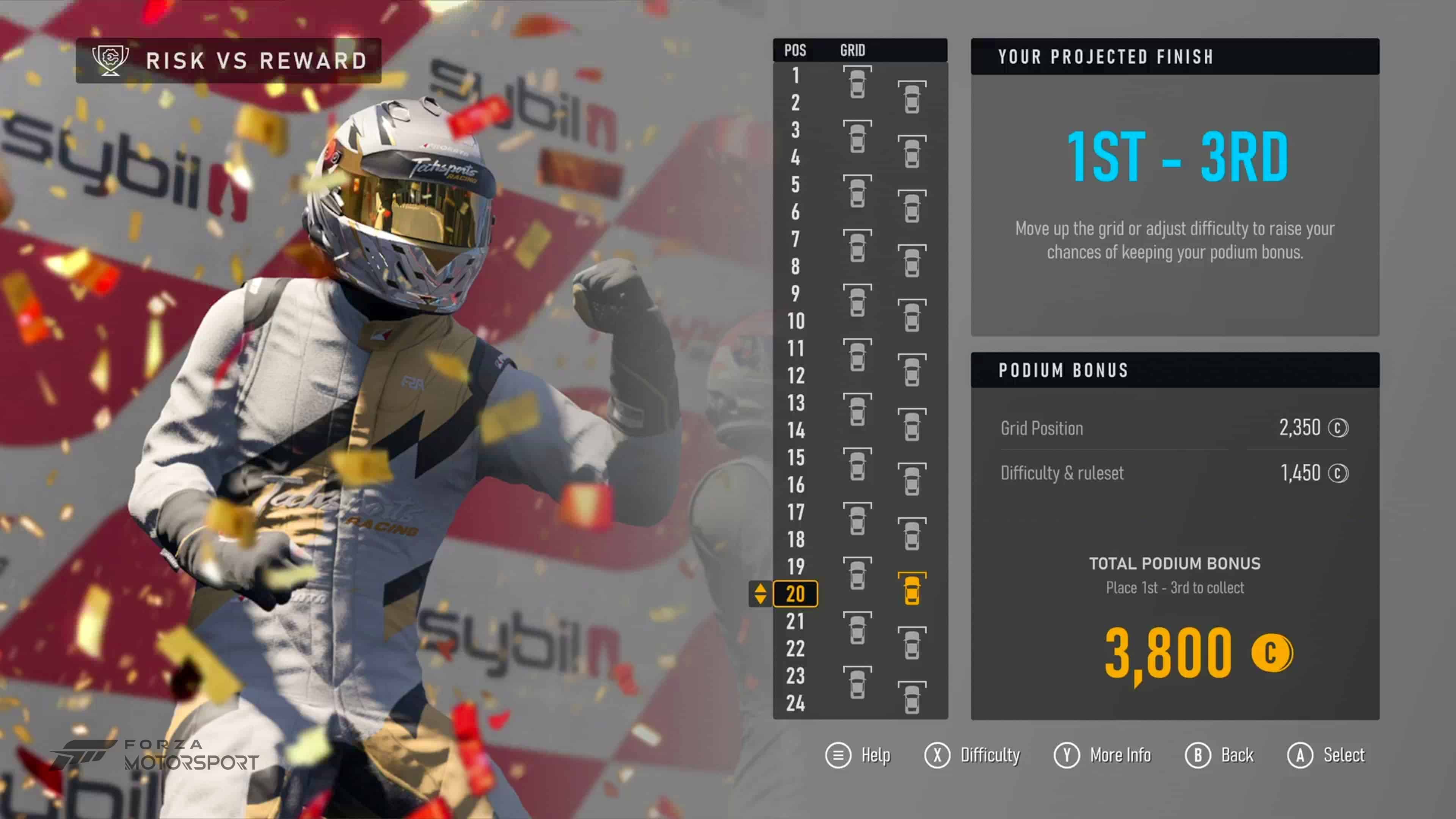
At first glance, these changes are small but meaningful. They add compelling stakes to not just every race you run, but how you perform at every stage within it – a motivational strive for perfectionism. So despite the lack of distinct extrinsic flavour in Forza Motorsport, the act of racing – even with stock cars – remains compelling and immediately rewarding.
Turn 10 has hopes that the game will remain Xbox’s flagship racing platform for a while, with live operations – including new events, cars, and tracks – as a key consideration during its production. But despite the series’ long history, it’s the core components that Turn 10 need to be perfect in order to launch Forza Motorsport on the right foot, and get it set up for that long tail. So they’re not being precious for the sake of tradition.
“At the root, this game is reborn,” says Greenawalt. “This is ‘Forza Motorsport‘, this is a rebirth.”
Forza Motorsport will release on 10 October 2023 for Xbox Series X/S and PC.
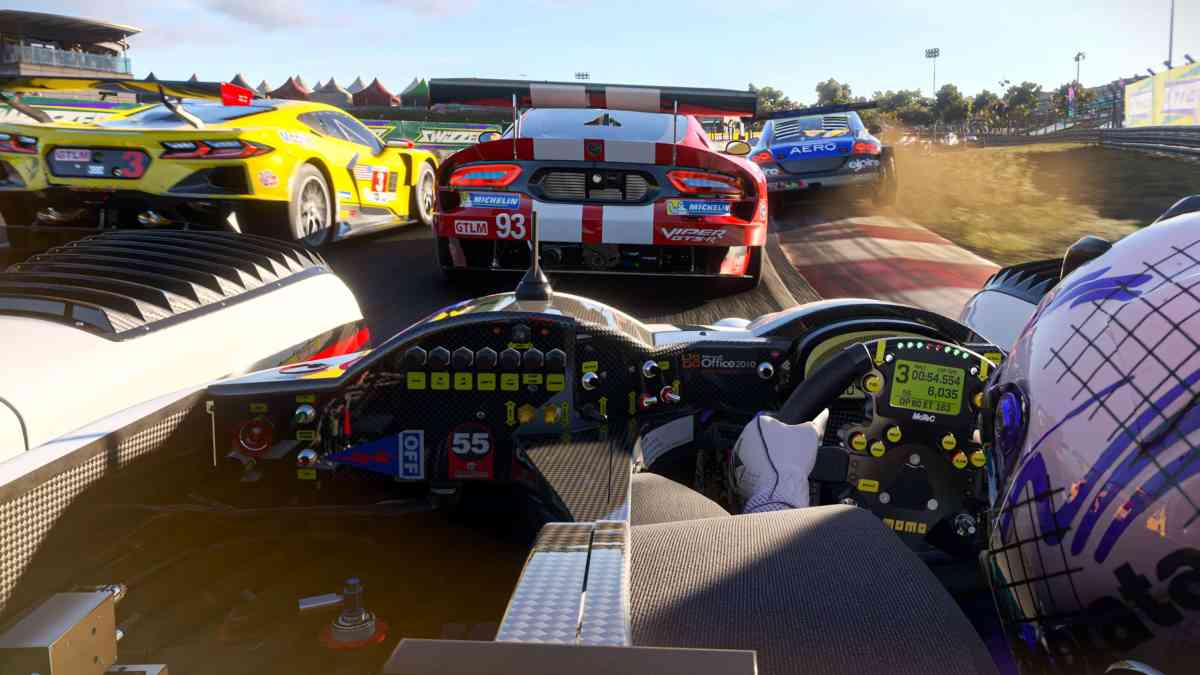
![Forza Motorsport: Standard Edition - Xbox Series X/S and Windows [Digital Code]](https://m.media-amazon.com/images/I/51Pb2006TTL._SL500_.jpg)




